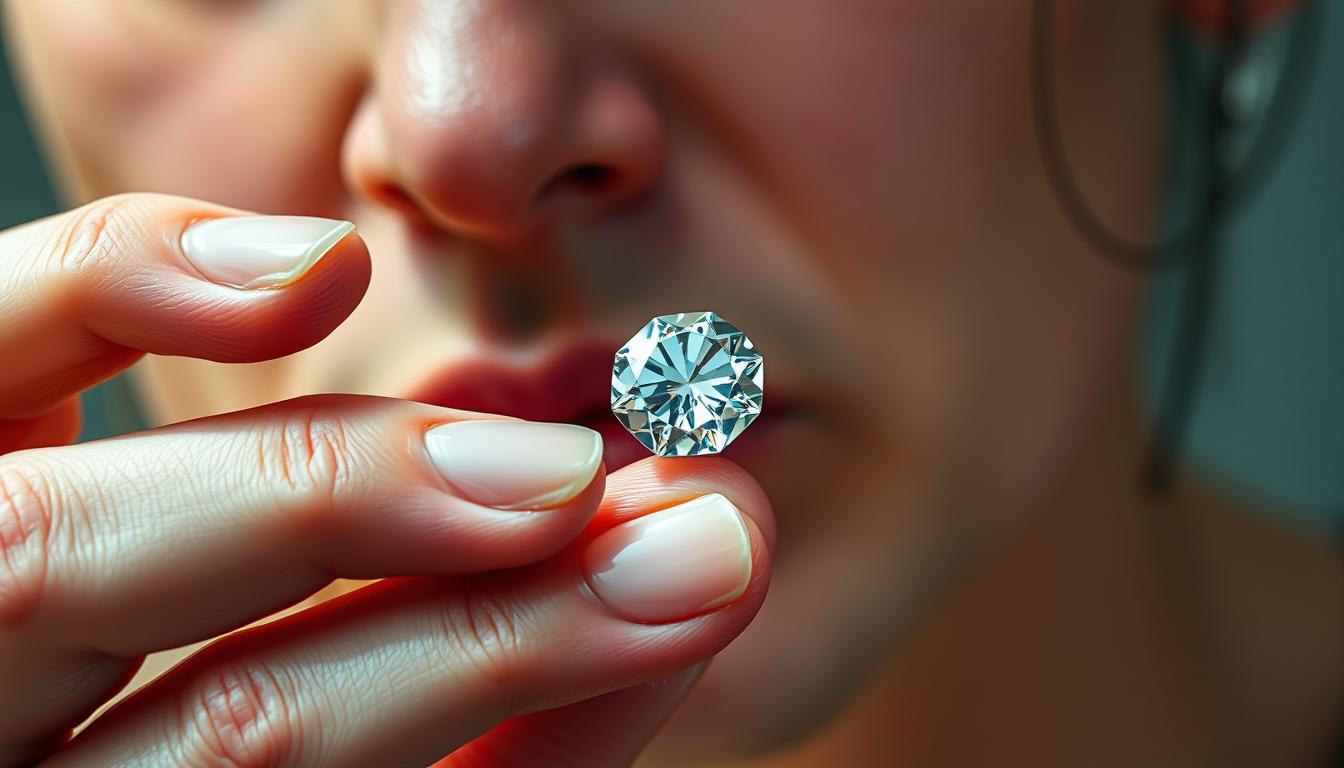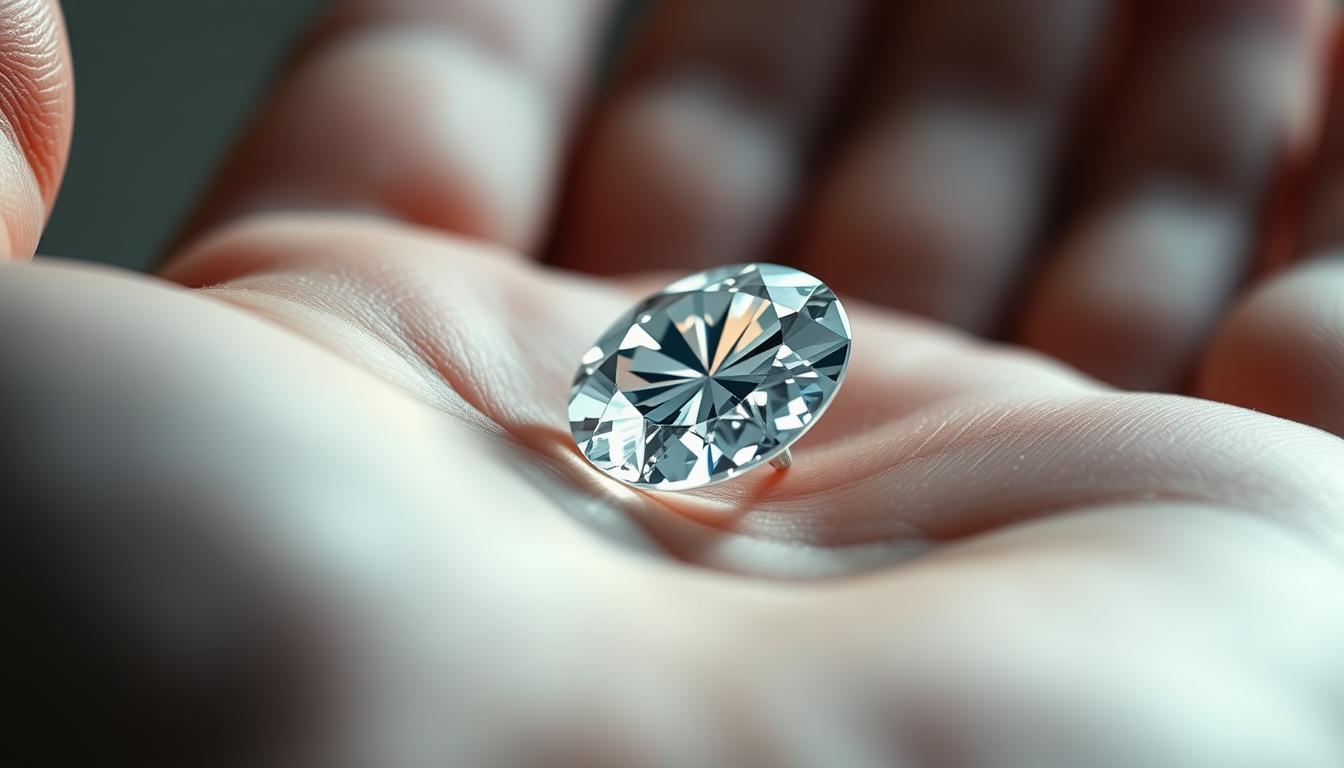Can You Eat Diamonds? Here’s What Happens
Imagine holding the hardest natural material on Earth. Now picture swallowing it. While this sounds like fiction, real-life cases exist—like a tourist in China who tried to hide a stolen gem by eating it. Stories like these spark curiosity: what happens when someone ingests a diamond?
These sparkling stones symbolize wealth and endurance. Their unmatched hardness makes them industrial tools and luxury symbols. But myths about their “indestructible” nature lead to wild questions. Could swallowing one harm you? Would it pass through safely?
This article explores science and sensational stories. Learn how diamonds form under extreme pressure and why their structure matters. Discover documented incidents of ingestion and medical outcomes. We’ll separate facts from folklore about these precious stones.
Ready to uncover the truth behind this glittering mystery? Let’s dig deeper into geology, biology, and headline-making events.
Understanding Diamonds: Formation, Properties, and Cultural Myths
Beneath our feet lies a hidden world where time and pressure work magic. These forces transform ordinary carbon into nature’s most dazzling treasures. Let’s explore how these gems form and why they’ve fascinated humans for millennia.
The Science Behind Diamond Formation
Deep in Earth’s mantle, extreme heat and crushing pressure reshape carbon atoms. Over millions of years, these atoms lock into a sturdy tetrahedral structure. This slow dance creates the hardest natural material known to us.
Volcanic eruptions later bring these crystals closer to the surface. The journey from formation to discovery spans longer than human history itself. Unlike other gems, their atomic arrangement makes them nearly indestructible.
From Ancient Legends to Modern Perceptions
Ancient Greeks believed diamonds were divine tears, while Romans saw them as star fragments. Tibetan Buddhists still view these stones as symbols of pure wisdom. Such stories reveal how cultures explained what science now understands.
Today, we admire diamonds for their light-bending brilliance and durability. Modern tools let us study their creation process in detail. Yet their symbolic power remains strong—whether in jewelry or industrial tools.
| Culture | Ancient Belief | Modern Understanding |
|---|---|---|
| Greek | Tears of gods | Carbon crystallization |
| Roman | Fallen star pieces | Volcanic transport |
| Hindu | Lightning-made gems | High-pressure formation |
| Tibetan | Enlightenment symbols | Atomic structure studies |
Can You Eat Diamonds? Examining the Science and Consequences
The journey of a swallowed gem through the body is both fascinating and complex. Let’s explore how our systems handle unexpected items and what science says about potential risks.
Digestive Transit and the Body’s Reaction to Hard Objects
Your digestive system works like a conveyor belt. Muscles push items through a 30-foot pathway. Smooth objects often exit unharmed within 2-5 days. Diamonds, being non-toxic, don’t poison the body. But their hardness raises questions.
Research from Walter Reed Army Medical Center shows 80% of swallowed items pass naturally. Size matters most—a pea-sized stone likely travels safely. Sharp edges? That’s where trouble might start. Think of swallowing a popcorn kernel versus a toothpick.
Medical Insights on Foreign Object Ingestion
Doctors monitor patients through X-rays. Most objects move without causing damage. But diamond dust or jagged pieces could scratch organs. A 2021 study found sharp items cause complications in 15% of cases.
| Object Type | Pass Rate | Risk Level |
|---|---|---|
| Round gemstones | 90% | Low |
| Diamond dust | 75% | Medium |
| Sharp fragments | 60% | High |
Your stomach acid can’t break down these carbon crystals. But unless they’re needle-shaped, they’ll probably leave the same way they entered. Ever wonder why cats swallow hairballs? Our bodies handle odd items better than you’d think!
Real-Life Incidents: When Diamonds Turn Risky
Truth often outshines fiction when it comes to gemstone mishaps. These sparkling stones have starred in bizarre criminal plots and medical dramas worldwide.
Notable Cases and Their Legal Implications
A Chinese tourist made headlines in Sri Lanka after swallowing a 1.5-carat diamond at a gem show. X-rays revealed the stone lodged in his throat—police used laxatives to recover the $13,600 jewel. Similar stories echo across continents:
- Ontario authorities confined a man in a special cell until he passed a $20,000 diamond
- A Utah woman swallowed a $4,000 ring, swapped it with a fake, and faced fraud charges
Legal teams now use creative methods like bowel movement monitoring. Courts treat these acts as theft, often adding fraud charges for replacement attempts.
Health Concerns and Emergency Responses
While smooth stones usually pass safely, sharp edges change the game. Doctors recall a 2010 case where diamond fragments caused severe hemorrhoids during exit. Emergency protocols include:
- Imaging scans to locate the object
- Laxative treatments for natural removal
- Surgery for dangerous positions
Most patients recover fully, but the journey proves uncomfortable. Why risk it? These cases remind us that high-value items demand careful handling—both for safety and legal security.
Unique Applications Beyond the Kitchen: Diamonds in Cannabis and Industry
What do luxury jewelry and cutting-edge cannabis products share? Both rely on the unique properties of crystalline structures. While myths about swallowing gems persist, modern industries harness these materials in surprising ways.
Cannabis Diamonds: Extraction, Usage, and Safety Protocols
In cannabis labs, experts create “diamonds” through a fascinating process. THCA-rich sauce undergoes heat and pressure, forming glittering crystals. These potent concentrates contain up to 99% THC—stronger than traditional forms.
Safety matters with such powerful products. Labs test for purity, while users follow strict dosing guidelines. Did you know these crystals often come paired with terpene sauce? This mix balances flavor and effect during vaping or dabbing.
Industrial and Jewelry Perspectives on Diamond Utility
The same toughness that protects diamonds in nature makes them industrial powerhouses. Cutting tools and electronics rely on their durability. Jewelers value their sparkle, crafting intricate ring designs that catch every light angle.
- Drill bits slice through rock without wearing down
- Microscopic edges polish metals to mirror finishes
- Artists arrange tiny crystals into floral ring patterns
From factory floors to engagement rings, this material’s versatility shines. Proper processing ensures safety and quality—whether creating tools or treasures.
Final Reflections: Weighing the Risks, Rewards, and Realities
From ancient treasures to modern marvels, diamonds continue to fascinate. Born from carbon under extreme pressure, these gems symbolize both nature’s power and human ingenuity. Their journey from Earth’s depths to jewelry stores shows how time transforms ordinary elements into extraordinary wonders.
While their sparkle enchants, real risks exist when handling these stones. Smooth objects might pass through the body safely, but jagged edges could cause harm. Medical experts remind us that size and shape determine outcomes—safety always comes first.
Beyond adornment, diamonds serve surprising roles. Industrial tools harness their toughness, while cannabis labs grow crystalline structures for potent concentrates. Each application demands careful practices to protect users and preserve quality.
Stories of stolen gems swallowed for concealment reveal a darker side. These tales highlight why proper handling matters in every way. Whether crafting jewelry or handling concentrates, respect for the material’s power is essential.
Science helps us appreciate diamonds’ brilliance and potential dangers. By understanding their formation and effects, one makes smarter choices. What lessons will you take from these glittering stories of nature’s marvels?







